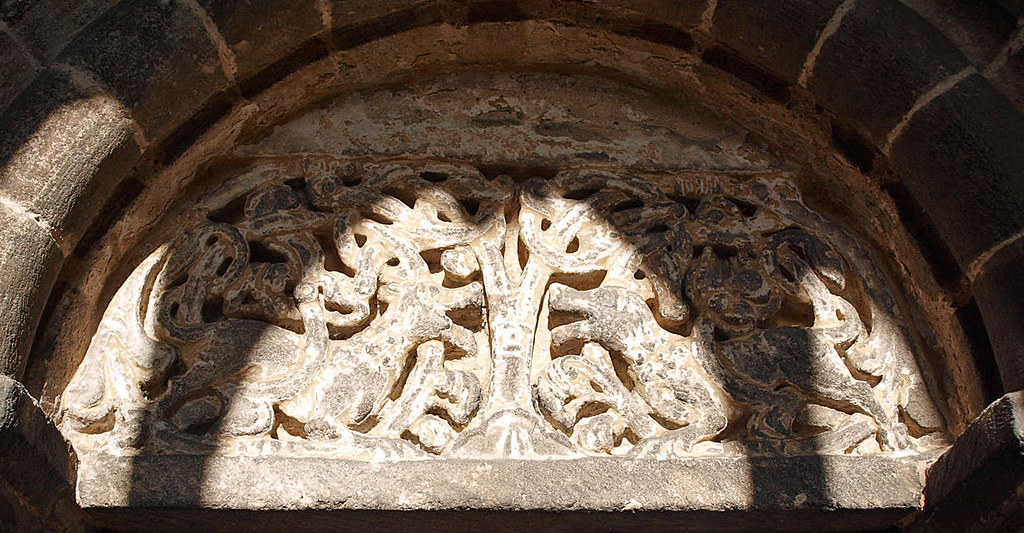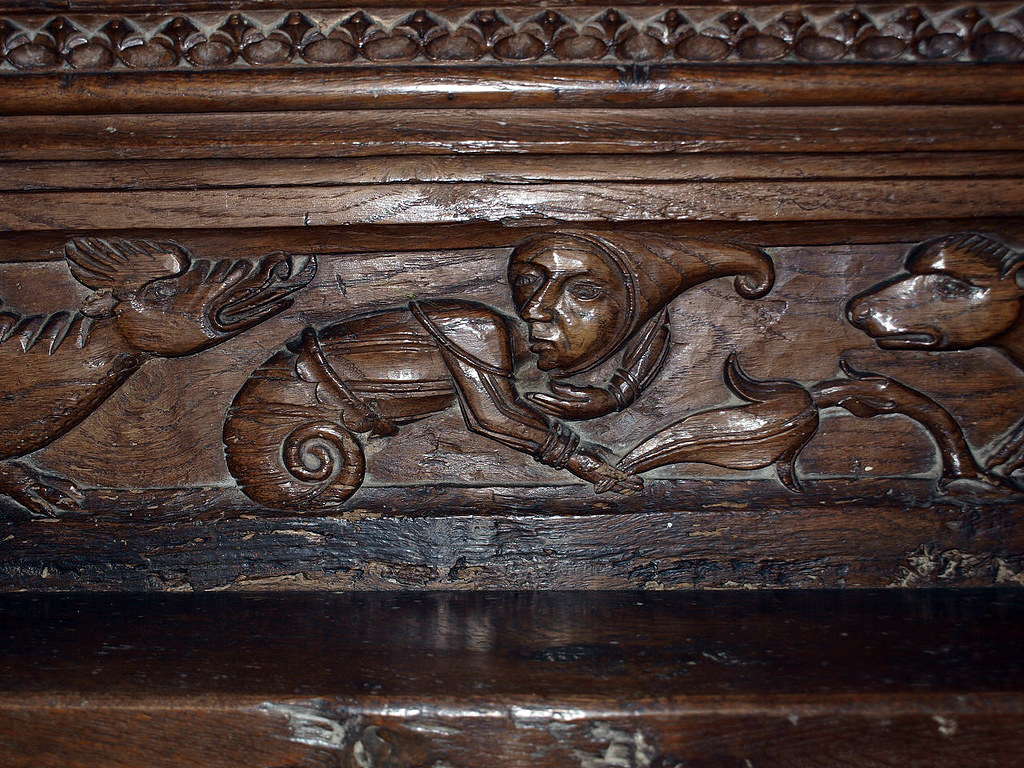ALL SAINTS. Nave and chancel, restored in 1868. Two Norman doorways survive, both with one order of shafts and primitive volute capitals, and both with carved tympana. That on the S side represents the Tree of Life with two affronted hounds l. and r. The branches and leaves spread and intertwine. The N tympanum is a puzzle. It faces inwards and represents two standing figures so childishly done that an earlier than Norman date seems likely. Perhaps a pagan stone was re-used. Norman also the chancel arch, again with volute capitals. The arch has one big roll moulding and no other mouldings. l. and r. two large Dec niches, no doubt for side altars. - BENCHBS. A fine set. The ends have tracery, and poppy-heads with seated animals. The seat backs are carved (not in openwork) with tracery, foliage, and figures (grotesques, a jester, etc.).
WORDWELL. It is in the heart of Suffolk’s little Black Forest, girdled by the heathland and the dark hills, one of them the fir-clad Hill of Health. In the churchyard is an old well unearthed last century. The Normans gave the village its tiny church, and although time has wrought many changes (in the 19th century it was used as a granary) it has preserved four splendid examples of Norman craftsmanship. One is a rough font with three quaint faces, another is the low chancel screen, and there are two Norman doorways. The north doorway has a boldly carved man with his hands upraised and another figure with a globe, probably a representation of the Creation. A jolly man seems to welcome those who come to the south door and above him is a tympanum with two animals eating leaves of the Tree of Knowledge. Rarer treasures are the 14th century benches with fine poppyheads and fantastic guardians - a cat with a very long tail, a dog with its hair parted, two small dogs with elaborate collars, and other queer animals and remarkable people.



No comments:
Post a Comment